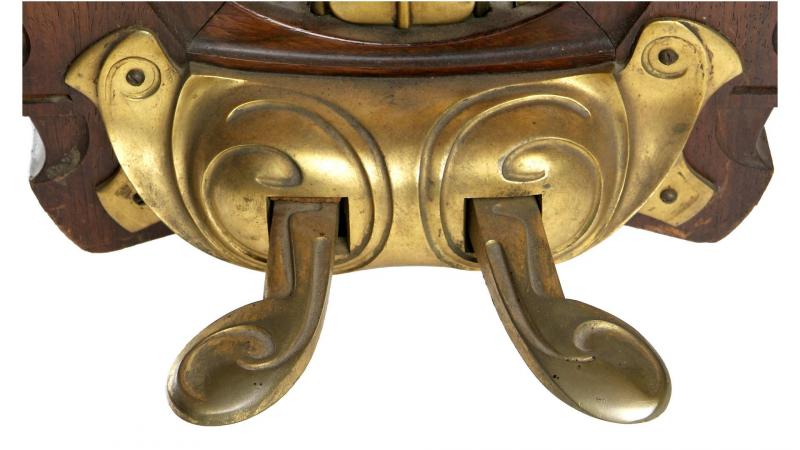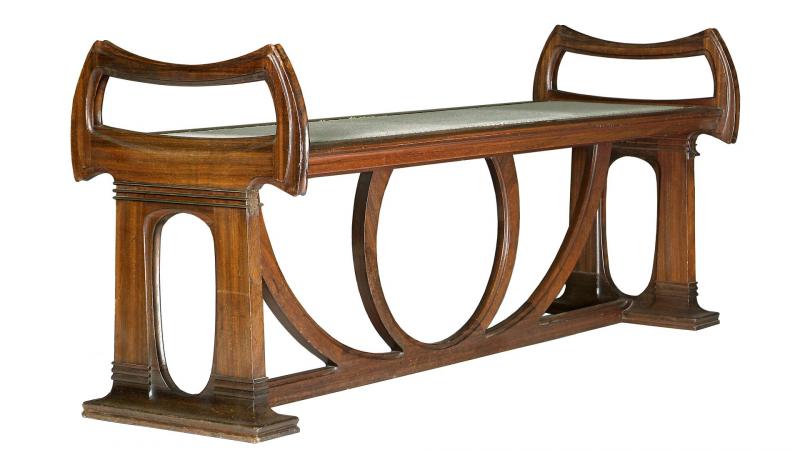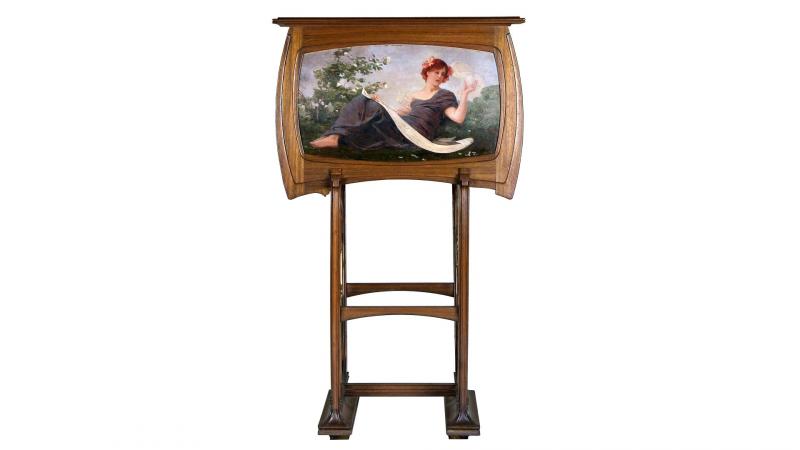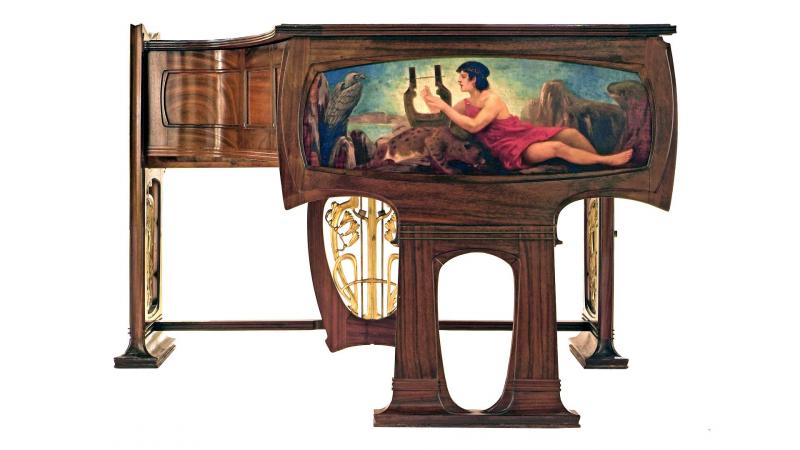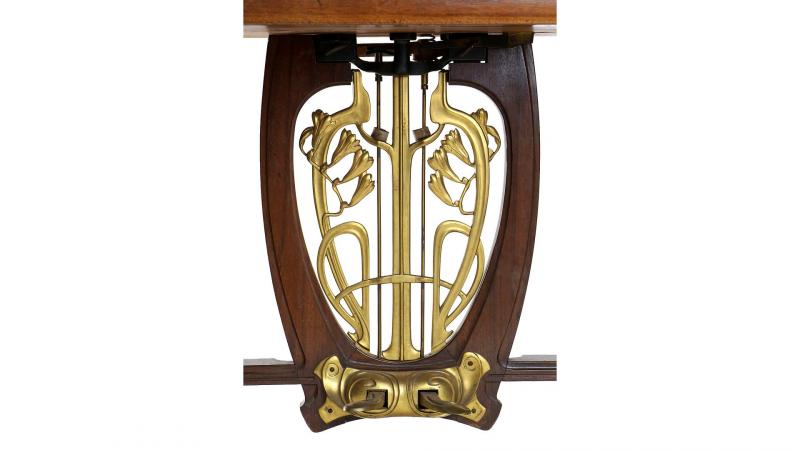Work classified as a Treasure by the Wallonia-Brussels Federation (1 March 2013)
Gustave Serrurier, known as Serrurier-Bovy, (1858–1910) is rightly recognised as one of the figureheads of Art Nouveau in Belgium, at the same level as Van de Velde and Horta. An architect, but, above all, a furniture designer, he had the opportunity to create, in addition to a rather abundant production, some remarkable furniture sets that consisted of the complete decoration of important buildings. He is also responsible for the decoration of the Chapelle-en-Serval, close to Compiègne (1901), his own villa, "L'Aube", in Cointe (1903), La Cheyrelle in Dienne, Auvergene (1903–1909) and, finally, the Villa Ortiz-Basualdo, in Mar del Plata, Argentina (1910–1912). While these collections are now well documented, they have, on the other hand, almost all been scattered. This remarkable piano, as well as the exceptional pool table, which is also preserved and displayed in the museum, was designed for the Château in La Chapelle-en-Serval. Vandalised during the First World War, this collection is very well documented by notable articles of the time, which present these remarkable artefacts to us in their context.
The Liège painter Emile Berchmans (1867–1947) often worked with other contemporary architects, such as Paul Jaspar (1859–1945), on the interior decoration. Here he made the piano’s painted panels, as well as the music stand. He is also responsible for the large poster printed at Bénard for the Serrurier-Bovy boutique in Brussels.
The instrument itself was created by Pleyal in Paris.
More information on the Treasures of the Wallonia-Brussels Federation
The decree of 11 July 2002 makes it possible to classify as a Treasure, the goods which are of notable interest for the Wallonia-Brussels Federation. Within this framework, several works whose artistic quality, rarity or links with the history and history of art are no longer in question, are further enhanced by this classification. This recognition makes it possible to highlight these jewels of our artistic and cultural heritage, but above all to better protect them, to help restore them or to prevent them from being sold abroad. Several major historical works are recognised as Treasures each year.
A protected property is given the status of "treasure". This term originates from European law, which offers each Member State the possibility of protecting its "national treasures of artistic, historical or archaeological value". These treasures are therefore exempt from the principle of free movement of goods within the European Union and may be subject to restrictions or bans on leaving the national territory concerned.
More information on the website of the Wallonia-Brussels Federation.
